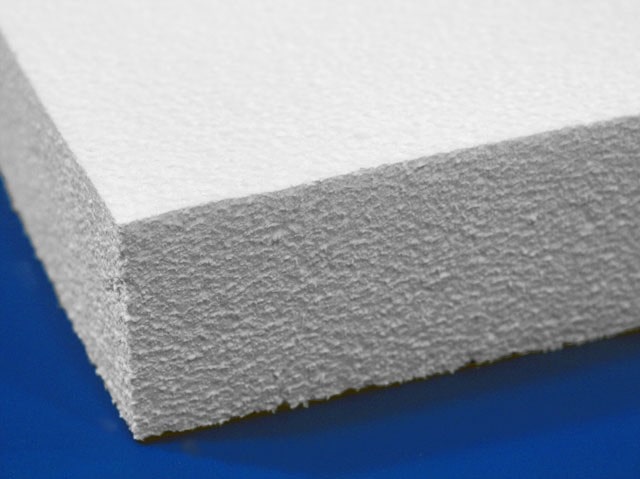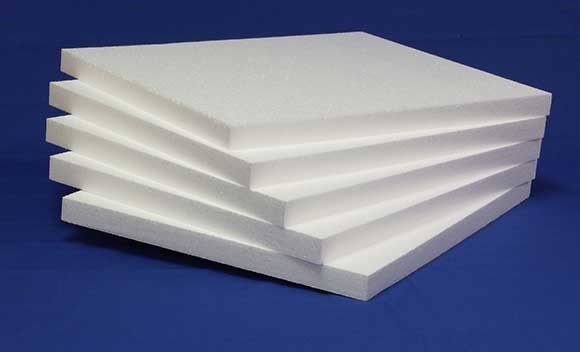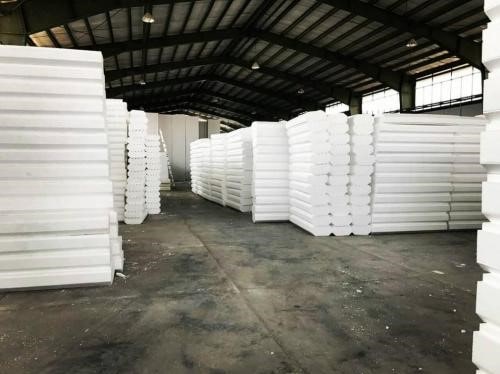The most important use of polystyrene foam is in construction. This product is available in the form of refractory and flammable blocks in the world. The weight of these blocks is very light and therefore they greatly reduce the weight of the building.
Another use of polystyrene foam is that they are used as insulation in buildings. Polystyrene foam insulation blocks are usually enclosed by a fireproof coating, which makes these blocks fire-resistant for a long time.
The most important application of polystyrene foam is its use in buildings due to their low weight, which reduces the dead load of the building and the final weight of the building. This makes buildings more earthquake safe.
But about the fire resistance of polystyrene foam, we must say that the only problem with this material is that they lose their volume against fire in a short time. Polystyrene foam is a white material that allows it to be insulated against moisture and sound. Polystyrene was first used by the Germans to build bridges during World War II.

Use of polystyrene foam
Familiarity with the use of polystyrene foam
Polystyrene foam is considered one of the products of the petrochemical industry. Its appearance is seen as tiny crystals. This product expands in contact with steam and pressure. The closed cellular structure of polystyrene foams makes these foams highly water-resistant. Other features of this foam are resistance to bacterial growth and perishability.
The uses of polystyrene foam are varied. This product is popularly mistakenly known as rubber. This foam is a type of polymeric material commonly known as expanded polystyrene or EPS. The use of polystyrene foam can be seen in many cases such as insulation, advertising, and packaging.
What are the main uses of polystyrene foam?
- Its use in insulating flat and sloping roofs
- Use of polystyrene foams in decorative and prefabricated beds. This operation is performed without the need for rabbits and rebars.
- A suitable alternative for fiberglass under pipe coverings and gable roofs
- Use of polystyrene foam as a building facade cover
- Application as double-wall insulation in walls
- Application of these for the production of lightweight prefabricated parts and industrialization of buildings
- These foams are used as the middle layer of wall and ceiling sandwich panels.
- One of the best examples of insulation for use in refrigerators
Advantages of using polystyrene foam
- The first advantage of using polystyrene foam is its lightness compared to other materials in prefabricated walls.
- Ability to transport and move very fast.
- This product insulates against moisture, heat, and noise.
- High safety against shear forces caused by earthquakes.
- Relatively high fire resistance.
- This product is very resistant to the penetration of insects into the building and prevents them from penetrating.
- The use of this foam in sandwich panels makes them less thick and allows access to more space.
- The flexibility of the parts allows freedom of action in performing various designs.
- Reduce costs and save on foundations and building structures.
- Increase the useful life of buildings

Applications of polystyrene foam
HIPS
High Impact Polystyrene (HIPS) differs from General Purpose polystyrene foam in structure and manufacturing technology. But the raw materials used to make both are the same.
Compressed polystyrene foam is made using the latest technologies in the world and has been considered by construction experts and specialists for many reasons such as very low water absorption power, high strength, low price, and excellent insulation capability. The use of polystyrene foam is quite affordable.
What is the use of extruded polystyrene foam (XPS)
This product is also a type of polystyrene foam that is made of solid polystyrene crystals. This product has been proposed as an excellent insulation option due to its very high resistance to high pressure and heat, and they are used to insulate buildings. The non-porous and compacted texture in these foams makes the water absorption very low. Also has a high resistance to moisture penetration.

